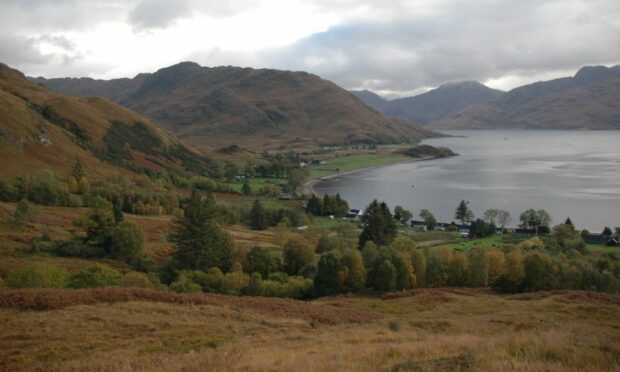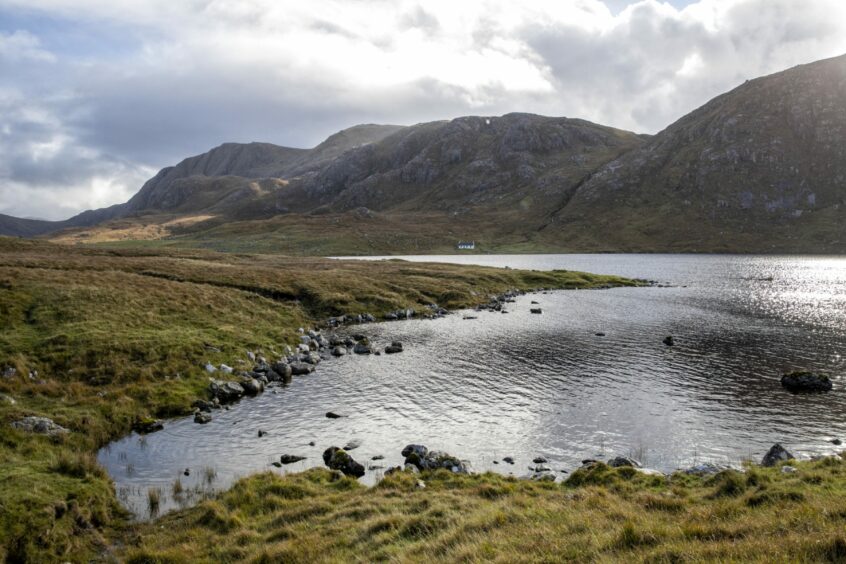New land reform legislation should be extended to cover community assets including piers and hotels, according to a new report.
The Scottish Government is due to introduce the Land Reform Bill by the end of this year.
A new discussion paper says a much more radical and integrated approach is needed to achieve a fair sharing of Scotland’s land wealth.
It suggests the idea of a Scottish Convention for Land Justice and calls for action to tackle challenges including depopulation and the climate and biodiversity crises.
Dominant pattern of private ownership
The paper, ‘Land Reform for the Common Good’, is written by sustainable development consultant and land reform policy advisor Dr Calum MacLeod.
It is published by The Jimmy Reid Foundation, an independent think tank set up in memory of the late trade union activist and politician.
The paper argues that, despite political rhetoric since devolution, the dominant pattern of private ownership remains virtually unchanged.
It says since 2016, the Scottish Land Fund has helped bring just 0.1% – under 30,000 acres – of rural land into community ownership.
In contrast, nearly 343,000 acres of rural land changed hands in 2022 alone, with community buyers “conspicuous by their absence”.
The Bill intends applying a public interest test to assess whether the transfer of a large-scale landholding poses a risk to the public interest.
Dr MacLeod calls for a minimum threshold of 500 hectares (1,235 acres) to constitute large-scale holdings, rather than the government’s proposed 3,000 hectares (7,413 acres) threshold.
He says an ‘aggregate threshold’ criterion would address accumulation of land by individuals or groups in different locations.
He also calls for the scope of the public interest test to be extended to include infrastructure of community significance, such as piers, slipways, hotels, community facilities or greenspace.
This, he said, would enable it to be applied to urban as well as rural contexts.
Fragmented and piecemeal policy
Dr MacLeod said: “Devolution has revitalised land reform as a public policy issue.
“But too much of that policy is developed and implemented in fragmented and piecemeal fashion, rather than being underpinned by a clear strategic vision about who and what Scotland’s land is for.
“Scotland’s land politics urgently needs to rediscover and reassert its radical edge to make land work for the common good, not the private interests of a privileged few.”
He said the political rhetoric surrounding land reform should be matched by much more integrated and far-reaching legislative and fiscal policy action.
Jimmy Reid Foundation director, Dave Watson, said: “Jimmy Reid highlighted ‘the centralisation and concentration of power in fewer and fewer hands’, and there are few places where this is more pronounced than in land ownership.
“We are therefore pleased to publish this important contribution to the debate around land reform in Scotland.”
Last month, former education minister and Highland Council leader Peter Peacock called for government and public bodies to buy areas of Scotland to ensure fairer distribution of land.
He said ambitious land reform means private landlords “who own most today must own less tomorrow”.
Rural affairs and land reform secretary Mairi Gougeon said the Land Reform Bill seeks to further improve transparency of land ownership.
She said it will help ensure large-scale land holdings deliver in the public interest and empower communities by providing more opportunities to own land and have more say in how land is used.
How land is owned, used and managed in future
“With this legislation, we have a real opportunity to ensure that one of the greatest assets this country has – our land – is owned, used and managed in a way that benefits the nation as a whole, and local communities, not just the individuals who own it.”
Ms Gougeon said a consultation on the Bill received over 500 responses, the majority of which agreed with many of the government’s proposals, including a public interest test for transfers of large-scale landholdings.
“I welcome the Jimmy Reid Foundation’s support for further action on land reform and would be happy to discuss their ideas and proposals.
“As our Bill progresses I want to hear directly from stakeholders to hear their feedback and listen to any concerns they might have.”
Sarah Jane Laing, chief executive of Scottish Land and Estates, said: “ It is quite extraordinary that after 20-plus years of Scottish taxpayers helping to fund millions of pounds to support land reform initiatives, this new report contends it is not enough.
“There have been hundreds of community land purchases funded primarily from the Scottish Land Fund and there is now a third land reform bill being brought forward in the Scottish Parliament.”
She said there is a raft of legislative mechanisms to enable communities to buy land and a “plethora” of transfers and sales have been commonplace for years.
“Suggestions that landholdings above 500 hectares should be categorised as ‘large scale’ don’t reflect the realities of farming and land management and will be of concern to farmers.”



